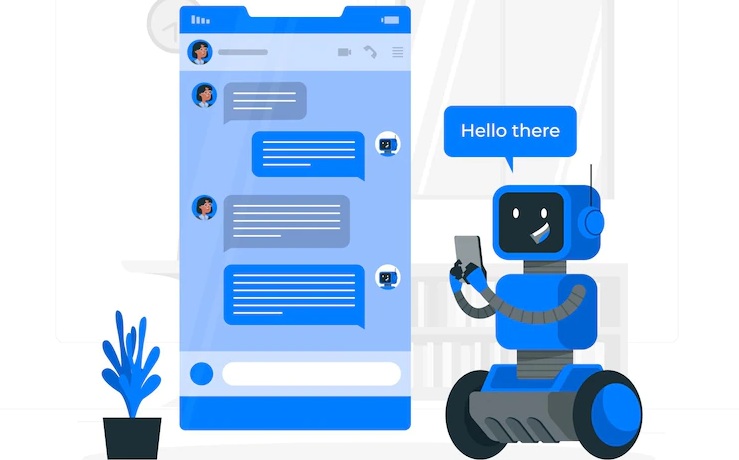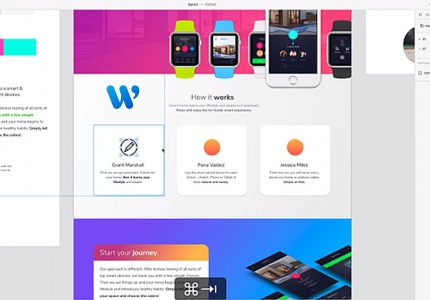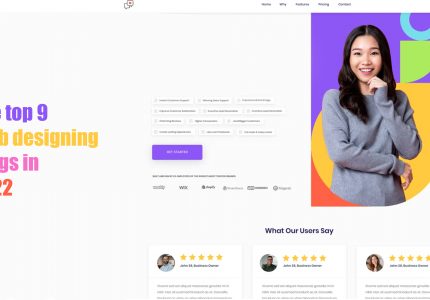Web Development Trends- According to studies, more than half of internet users want a website to load quickly, within two seconds of clicking a link. If your site takes more than three seconds to load, your visitors will most likely leave and are unlikely to return. Furthermore, a company’s website’s performance has a direct impact on its bottom line. These standards are influenced by the expectations of our users and how we respond to them. As a result, new trends, standards, and best practices emerge, which business owners must keep up with to always have happy customers.
So, in this blog, we will take a look at the technologies that will drive the most popular web development trends in 2022. Some trends will remain as the underlying technology advances, while new technologies will replace others that appear to improve the user experience.
Also Read, Software Development- Best Guide to Build A Reliable Software
1. Artificial intelligence Is At The Heart Of Chatbots.
As we saw last year, Artificial Intelligence is improving as it makes our work more efficient and simple to do. We cannot underestimate the importance of Artificial Intelligence in ensuring that we have access to just the most relevant and useful data available for our purposes. Simply said, AI handles the real work so that we do not have to. Chatbots, which use artificial intelligence, is already having an influence on customer service. Their responsibilities are growing on a regular basis. They will ultimately take over support management roles as well. As a result, firms will be able to save money on hiring managers and redirect their resources elsewhere.
The ease of websites browsing will ensure a high site ranking and make the user experience easier. Chatbots are beneficial in high-customer-service like banks & online shopping businesses. A human chat operator cannot always answer questions since they must rest and leave after their duty is over, while the bot works around 24/7.

2. PWA (Progressive Web Applications)
A progressive web app (PWA) is a website that looks and works like a mobile app. PWAs takes use of native mobile device features without having the end user visit an app store, pay, and download software locally. Furthermore, you can discover a PWA through a search engine query and accessed immediately using a browser. The most amazing feature is that the loading rates are quick, similar to that of a computer, which adds to the convenience.
3. The Dark Mode
This dark mode is a design term for a low-light user interface that uses a dark colour as the primary background colour, reversing the traditional light-on-dark design that designers have used for decades. Users’ screen time is rising, driving the development of Dark Mode as a solution for reducing eye strain and allowing users to connect to a site for longer periods of time. Large digital firms like Facebook and Google have walked upon this strategy, hence, influencing others.
4. Optimization of Voice Search
Voice Search Optimization has effectively integrated into our daily lives with Google Assistant, Apple’s Siri, and Amazon’s Alexa. Voice recognition technology has become one of the most advanced web development approaches in recent years. According to Adobe Analytics, people prefer voice search to type, with a huge 47 per cent depending on it. These people appear lifelike against the backdrop of the many activities that surround our lives.
Speech recognition is a growing trend that will increase reachability and user experience. It will make the internet more accessible to the visually and hearing impaired. In response to this growing trend, digital megacorporations such as Amazon, Apple, and Google have come up with smart speakers in the market.
5. Mobile-First Development Strategy
The most important factor in a company’s ability to maintain customers is the user experience. 74% of buyers will return to a website that is mobile-friendly and optimised. People’s lives and connections have been transformed by mobile phones. People rely on technology to fulfil their daily duties, which is why the flexibility of web technologies for both desktop and mobile is important.
6. AMP (Accelerated Mobile Pages)
Accelerated Mobile Pages is now one of the most popular web development trends, and it will remain so in 2022. The goal of AMP is to make web pages load faster and reduce website bounce rates. It is also perfect for using animation and video content because it does not overpower after activation. Unlike full-scale web pages, the web pages are optimised, perform swiftly, and have a convenient and simplified design with only the essential features. Their popularity is growing due to the fact that they are mobile-friendly and offer easily legible content.
AMP is a trend that has emerged in order to improve people’s internet experiences by delivering speedy load speeds and easy-to-use procedures. A successful custom web development strategy organisation will give a user-friendly solution to your end-users. This simply means more time on your website and a higher position against the competition.
7. Single Page Application
One of the top web development trends for 2022 is single-page applications. A Single Page Application (SPA) is a web application that runs in a web browser and does not refresh. These SPAs give a good user experience since you do not have to hit the refresh button every time you want to update content on their site. Gmail, Twitter, Facebook, and other apps that we use on a daily basis are all examples of SPAs. These apps automatically load content and are always up to date.
SPAs have a high capacity to hold end-user attention. They are simple to use and give quick information. Unlike websites where users must browse through several web pages and refresh pages to obtain particular information. As a result, SPAs give customers immediate feedback. SPAs are now growing popular. This trend will continue to transform all competitive websites.

8- Web Development Cybersecurity
As our reliance on technology grows, so do cyber threats. DDoS attacks were more than 248% in the first quarter of 2020. Millions of DDoS attacks were launched in 2020 by new attack vectors and threat actors. While the targeted industries in bulk were necessary to survive during the COVID-19 outbreak. These statistics conclude that we are all in danger. Users are aware of the growing problem. There is a growing desire for businesses to use robust security measures to keep their personal information private and secure.
Customers’ sensitive and personal information is maintained in areas such as health care, retail, and finance, all of which are vulnerable to security breaches. This needs a higher focus on cyber security measures to protect data. Companies should invest in the security features of their websites and use valid SSL certificates. Websites with a fair level of traffic should agree to the necessary security standards and undertake regular security audits.
9- Server-less Architecture
With the support of significant providers such as Amazon Web Services, serverless algorithms were created as part of the cloud computing execution paradigm (AWS). Although this method does not eliminate the need for servers, AWS handles the coordination and management, allowing you to concentrate on major tasks rather than maintaining servers and conducting manual work.
Serverless architecture comes from the methods to reduce system overloading, data loss, and expensive upgrades. This means one can replace traditional servers with cloud-based solutions that manage machine resource usage. Serverless architectural approaches are efficient because they reduce development and support costs, offer more adaptable programmes, and make apps more internet-sustainable.
2022 trends will include Chatbots, IoT apps, products with complicated backend inquiries, and APIs. File download, backup, notification delivery, and object export are the most common server-less technology activities. This technology can handle problems relating to sending and receiving notifications. This will allow users to download backup copies of important files, export various objects, and so on.
10. Better User Experience With Augmented and Virtual Reality.
An Augmented Environment adds digitally designed aspects to the real world. While Virtual Environment completely filters out the real world and immerses you in a digital reality. We will continue to value these trends in travel, architecture, and shopping. We can have hands-on experience with a product before purchasing it. Now, most companies allow employees to work from home. Websites like Spatial provide virtual conference rooms where you can interact with your coworkers.
It is understandable to want to take a virtual tour of a home from the comfort of your own home. Virtual reality and augmented reality technology work nicely with mobile apps. However, WebAR technologies are for web browsers. Even if it lags in terms of speed and cross-browser compatibility, progress is on the way. Augmented Reality Technology has a promising future in web development due to its simplicity and comfort.
Final Thoughts
You may be thinking about the future of web development. It all boils down to the user experience. For example, how easy it is to use the website. How fast does the webpage load? How much battery power do I use while on the job? More importantly, how safe is my data once it has been sent to the website? If a user is happy, you are in good condition because your ranking will almost probably be high. And remember, if you have a creative online vision that you want to make a reality, you do not have to do it alone – our team is here to help, contact us with one of our project managers and start today!






Pingback: ‘AI-Generated Content Is Spam’- Google’s Webmaster Guidelines - Westonik Blog